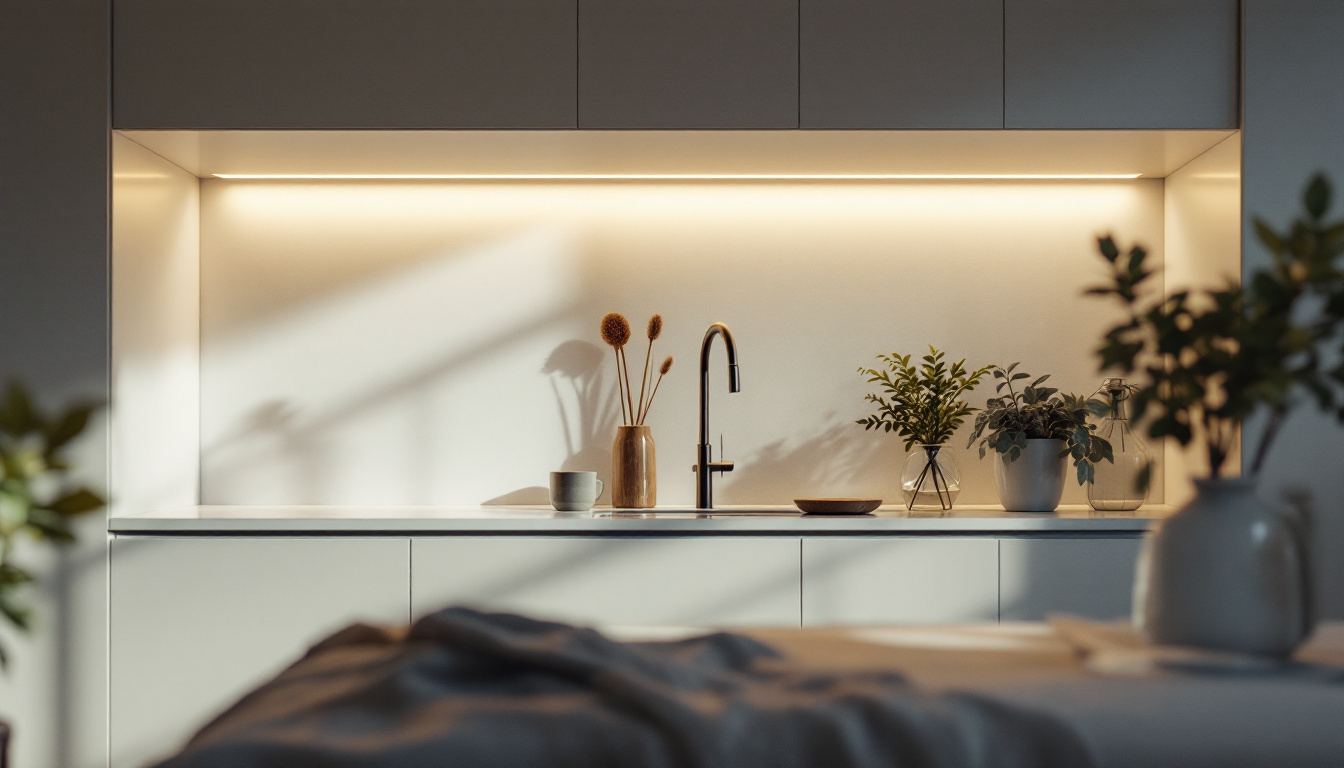
In the ever-evolving world of lighting design, contractors are constantly seeking ways to enhance their skills and improve their projects. The G Light serves as a beacon for lighting contractors, providing essential insights and practical tips that can elevate their work to new heights. This article delves into various strategies and techniques that can help lighting contractors master their craft, ensuring that they remain competitive in a dynamic industry.
Before diving into advanced techniques, it is crucial for lighting contractors to have a solid grasp of the fundamentals of lighting design. This foundational knowledge not only enhances creativity but also ensures that projects meet both aesthetic and functional requirements. A well-thought-out lighting plan can transform a mundane space into an inviting and dynamic environment, making it essential for contractors to stay informed about the latest trends and technologies in the industry.
Lighting can be categorized into three primary types: ambient, task, and accent lighting. Ambient lighting provides overall illumination, creating a comfortable level of brightness for daily activities. Task lighting, on the other hand, is focused on specific areas where activities such as reading or cooking take place. Lastly, accent lighting is used to highlight particular features or objects, adding depth and interest to a space. Each type serves a unique purpose, and understanding their interplay is vital for effective lighting design.
Understanding these categories allows contractors to design spaces that are both visually appealing and practical. By combining different types of lighting, contractors can create a harmonious balance that enhances the overall atmosphere of a room. For example, in a living room, ambient lighting can be complemented by task lighting in reading nooks and accent lighting to showcase artwork or architectural details. This layered approach not only improves functionality but also elevates the aesthetic appeal of the space, making it more inviting for occupants and guests alike.
Color temperature, measured in Kelvin (K), plays a significant role in the mood and functionality of a space. Warm white light (around 2700K) creates a cozy and inviting atmosphere, making it ideal for residential settings. In contrast, cool white light (around 5000K) is often used in commercial spaces where clarity and focus are essential. The choice of color temperature can significantly influence how people perceive a space, affecting their emotions and behaviors.
Contractors should consider the intended use of the space when selecting color temperatures. For instance, a home office may benefit from cooler tones to enhance productivity, while a restaurant may opt for warmer tones to create a welcoming environment. Additionally, it’s important to think about how natural light interacts with artificial lighting throughout the day. For example, in spaces with abundant natural light, the color temperature of artificial lighting should complement the daylight to maintain a cohesive look. By carefully planning the color temperature, contractors can create environments that not only look great but also feel right for their intended purpose, enhancing the overall user experience.
The selection of lighting fixtures is a critical aspect of any lighting project. The right fixtures not only enhance the aesthetic appeal of a space but also contribute to energy efficiency and functionality.
With the growing emphasis on sustainability, energy-efficient lighting solutions are more important than ever. LED fixtures are a popular choice due to their long lifespan and low energy consumption. They produce less heat, reducing the need for additional cooling, which can lead to significant savings on energy bills.
When selecting fixtures, contractors should consider the energy rating and the potential return on investment. By opting for energy-efficient solutions, contractors can provide added value to their clients while also contributing to environmental sustainability. Additionally, integrating smart lighting systems can further enhance energy efficiency. These systems allow for automated control of lighting based on occupancy and natural light levels, ensuring that energy is not wasted when spaces are unoccupied. The integration of such technology not only appeals to eco-conscious clients but also positions contractors as forward-thinking professionals in a competitive market.
While functionality is paramount, the aesthetic appeal of lighting fixtures cannot be overlooked. The style of fixtures should complement the overall design theme of the space. Whether it’s modern, traditional, or eclectic, the right fixtures can serve as statement pieces that enhance the visual narrative of a room.
Contractors should stay updated on current design trends and be prepared to offer a variety of options to clients. This flexibility not only demonstrates expertise but also helps in building trust and rapport with clients. Furthermore, understanding the psychology of color and light can significantly impact the ambiance of a space. For instance, warm white lighting can create a cozy and inviting atmosphere, perfect for living rooms and bedrooms, while cooler tones can enhance focus and productivity in workspaces. By considering both the technical and emotional aspects of lighting design, contractors can better meet the diverse needs of their clients and elevate the overall experience of the spaces they create.
Even the best lighting design can fall flat if installation is not executed properly. Mastering installation techniques is essential for ensuring that lighting systems function as intended and meet safety standards.
Before installation begins, careful planning of the lighting layout is crucial. This involves determining the optimal placement of fixtures to achieve the desired lighting effects. Consideration should be given to factors such as room dimensions, furniture placement, and the natural light available in the space.
Using software tools for lighting design can aid in visualizing the layout and making necessary adjustments before installation. This proactive approach minimizes errors and enhances overall efficiency during the installation process.
Adhering to safety standards and regulations is non-negotiable in the lighting industry. Contractors must be familiar with local codes and regulations to ensure that installations are compliant. This includes understanding electrical requirements, fixture ratings, and proper wiring techniques.
Regular training and certification can help contractors stay informed about the latest safety standards. This not only protects the contractor and their team but also instills confidence in clients regarding the quality of work being performed.
The integration of technology in lighting design has transformed the industry, offering new possibilities for innovation and efficiency. Contractors who embrace these advancements can significantly enhance their service offerings.
Smart lighting systems allow for greater control and customization, enabling users to adjust brightness, color, and timing through mobile applications or voice commands. These systems can improve energy efficiency and provide convenience for homeowners and businesses alike.
Contractors should familiarize themselves with various smart lighting products and their compatibility with existing systems. Educating clients about the benefits of smart lighting can also lead to increased demand for these advanced solutions.
lighting design software has become an invaluable tool for contractors, streamlining the design process and improving accuracy. These programs allow for detailed simulations of how light will interact with different surfaces and materials, helping contractors make informed decisions.
Investing in quality lighting design software can enhance a contractor’s ability to deliver exceptional results. Additionally, providing clients with visual representations of the proposed designs can foster better communication and understanding throughout the project.
Successful lighting contractors understand the importance of building strong relationships with clients. Effective communication and trust are essential components of a thriving business.
Clear and consistent communication is key to managing client expectations and ensuring satisfaction. Contractors should take the time to listen to clients’ needs and preferences, providing expert advice while respecting their vision.
Regular updates during the project can also help keep clients informed and engaged. This transparency fosters trust and can lead to repeat business and referrals in the future.
Providing post-installation support is an excellent way to reinforce client relationships. Offering maintenance services or troubleshooting assistance can demonstrate a contractor’s commitment to quality and customer satisfaction.
Encouraging clients to reach out with any questions or concerns after the project is completed can also lead to valuable feedback, helping contractors improve their services over time.
The lighting industry is constantly evolving, with new technologies, designs, and sustainability practices emerging regularly. Staying informed about these trends is essential for contractors looking to maintain a competitive edge.
Investing in continuing education and training can help contractors stay up to date with the latest advancements in lighting design and technology. Workshops, webinars, and industry conferences provide valuable opportunities for learning and networking.
By actively seeking out educational resources, contractors can enhance their skills and knowledge, positioning themselves as experts in the field. This commitment to growth not only benefits the contractor but also enhances the overall quality of service provided to clients.
Building a network of industry contacts can open doors to new opportunities and collaborations. Engaging with other professionals, such as architects, interior designers, and electrical engineers, can lead to referrals and partnerships that benefit all parties involved.
Participating in local trade associations or online forums can also provide valuable insights into industry trends and best practices. By staying connected with peers, contractors can share knowledge and learn from one another’s experiences.
Mastering the art of lighting design requires a combination of technical skills, creativity, and effective communication. By understanding the fundamentals, choosing the right fixtures, mastering installation techniques, utilizing technology, building client relationships, and staying ahead of industry trends, lighting contractors can elevate their work and thrive in a competitive market.
The G Light serves as a guiding principle for contractors, illuminating the path to success in the dynamic world of lighting design. By embracing these tips and strategies, lighting contractors can not only enhance their craft but also create spaces that inspire and delight their clients.
Ready to take your lighting projects to the next level? At LumenWholesale, we provide lighting contractors like you with the highest quality, spec-grade lighting products at prices that can’t be beaten. Say goodbye to local distributor markups and hello to a vast selection of reliable, high-performance lighting that meets the strictest industry standards. Plus, with free shipping on bulk orders, you can enjoy the ultimate convenience without any hidden costs. Elevate your craft with the perfect blend of quality, affordability, and convenience. Discover the best value in wholesale lighting by visiting LumenWholesale today.

Discover the ultimate guide to choosing the best garage LED lighting for your projects.

Discover the essential techniques lighting contractors need to maximize efficiency with a 750-watt inverter.

Discover the essential facts about recessed trim rings that every lighting contractor needs to know.

Discover essential tips for selecting and installing cabinet lighting without breaking the bank.